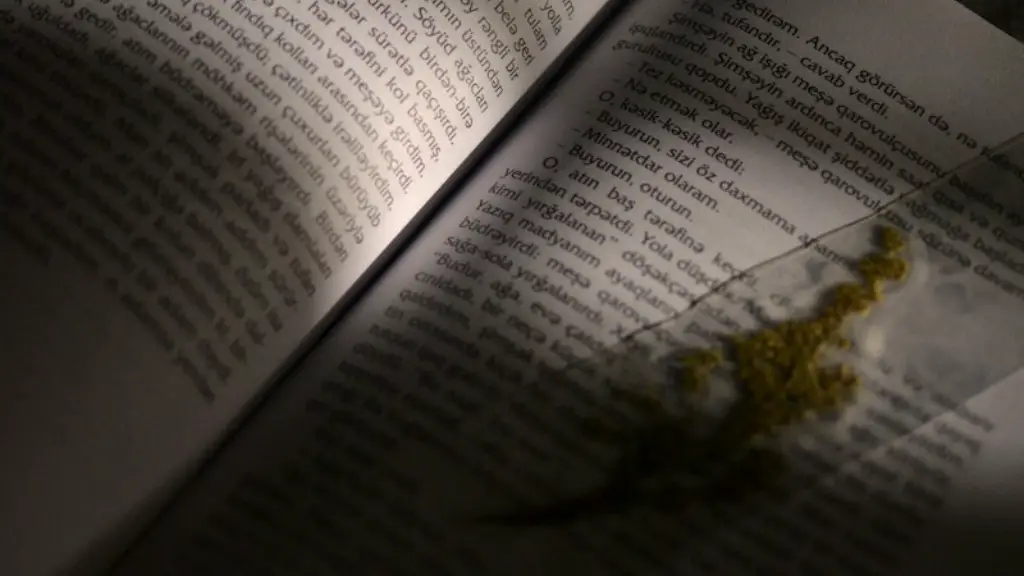Characteristics of Anglo-Saxon Poetry
Anglo-Saxon poetry is the literature of the early medieval English peoples, generally written in Old English. It is one of the earliest European vernacular literatures, existing from the 5th to the 11th centuries, and is written in a complex poetic meter that sounds musical in its native language.
Anglo-Saxon poetry has several distinct characteristics that distinguish it from other forms of early European poetry. These characteristics include its use of alliterative meter, its thematic focus on loss and death, and its use of kennings.
Alliterative Meter
One of the main defining characteristics of Anglo-Saxon poetry is the use of alliterative meter. This is a poetic structure that consists of two parts: stressed and unstressed syllables in a line, with the stressed syllables all beginning with the same consonant. This meter enables Anglo-Saxon poets to create a recurring pattern or “sound” throughout the poem.
Some examples of alliterative meter in Anglo-Saxon poetry can be found in the poem “Beowulf” by the anonymous Anglo-Saxon poet. In the poem, the poet writes: “Hroðgar maþelode, helm Scyldinga:” This line follows the alliterative meter with three stressed syllables beginning with “h”.
Thematic Focus
The thematic focus of Anglo-Saxon poetry is sometimes referred to as “elegiac” which means “mourning” in Greek. Anglo-Saxon poets often wrote about death, loss, and grief in their poems, reflecting the losses of their loved ones faced during the tumultuous period of the Anglo-Saxon invasions.
An example of this can be seen in “The Wanderer” by an anonymous Anglo-Saxon poet: “All my friends, my dear fellows/ Have gone to their own abodes/ Everywhere I am a fugitive/ Alone in the wide world.” The poet reflects his grief in this passage, expressing sadness and loneliness at the loss of his companions.
Kennings
Kennings are another unique feature of Anglo-Saxon poetry. A kenning is a metaphorical phrase or compound word used in place of a more literal name or term. For example, in the poem “Beowulf” by the anonymous Anglo-Saxon poet, the dragon is referred to as “the fire-drake of the fate.” This is a kenning; rather than just saying “dragon” the poet uses a phrase to describe the creature in a more poetic way.
Kennings are used in Anglo-Saxon poetry as a way to expand on a subject and create vivid images in the mind of the reader. They are often two or three words long and are used to pack description into a short phrase. Kennings can include metaphorical terms for people, animals, and objects.
Uses of Anglo-Saxon Poetry
Anglo-Saxon poetry has had a lasting legacy on literature and history. The poem “Beowulf” has been used as source material for books, movies, and plays for centuries, and it is one of the earliest surviving works of vernacular European literature. The themes of loss and death often found in Anglo-Saxon poetry have also had a profound impact on literature, as later authors draw on these themes to create similar works.
In addition, Anglo-Saxon poetry has been used as a source of insight into the early Germanic cultures of Europe. Through the study of these poems, scholars have been able to gain an understanding of the beliefs and customs of the early English peoples. Anglo-Saxon poetry has thus been an essential source of knowledge for academics studying the period.
Modern Day Influence of Anglo-Saxon Poetry
Today, Anglo-Saxon poetry continues to have an influence on modern literature and culture. It has inspired some contemporary poets and writers to use similar forms of alliterative meter, kennings, and themes in their creative works. The use of Old English language and words, once thought to be archaic, has also become somewhat trendier, as authors find ways of incorporating it into modern works.
In addition, the themes of loss and death found in Anglo-Saxon poetry can still be seen in modern works, as authors explore these issues through their writing. The beauty and complexity of Anglo-Saxon poetry can thus still be felt in some modern literature today.
Conclusion
Anglo-Saxon poetry is one of the earliest European vernacular literatures and is distinct from other forms of poetry. Its characteristics include a use of alliterative meter, a focus on loss and death, and the use of kennings. Anglo-Saxon poetry has had a lasting legacy on literature, as later authors and poets draw on the form and themes found in the works. It is also an essential source of knowledge for academics studying the early medieval English peoples. Today, Anglo-Saxon poetry still has an influence on modern literature and culture as authors find ways to incorporate its form and themes into their works.



